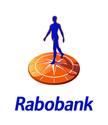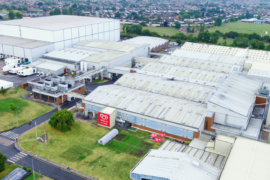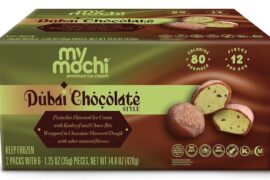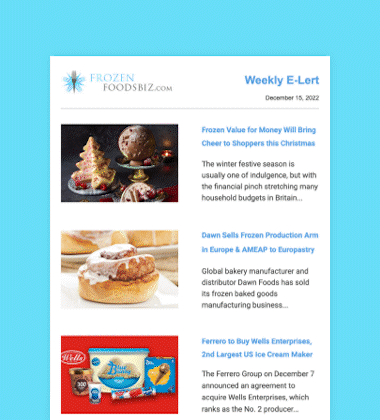The latest annual Rabobank survey of the world’s largest dairy companies, many of which produce ice cream, frozen yogurt and other frozen products, highlights the giants of one of the planet’s most valuable food sectors. The last 18 months have seen most of these players battle challenging conditions, with weak economies and supply constraints undermining sales growth in key markets. Against this backdrop, mergers and acquisitions have become an attractive route to growth and profitability. But with billion dollar deals increasingly hard to come by, dairy giants will need to acquire or tie up with more companies to sustain the same rates of growth in future. Those adept at acquiring and embracing new businesses will remain well positioned to survive and thrive.
“Once again, giants Nestle, Danone and Lactalis top the list, showing that the world’s largest dairy companies are reasonably entrenched,” commented Rabobank analyst Tim Hunt. “We continue to see some companies outperform their peers in sheer growth terms. In particular, the Chinese giants Yili and Mengniu, which saw their sales expand by 14% and 20% respectively, with Yili entering the top 10 for the first time ever.”
Saputo continued its march up the list to push to eighth place, in part due to several recent acquisitions. Meiji and Morinaga slipped down the list largely due to the sharp decline in the value of the Yen (in which most of their products are sold).
2013 was a challenging year for most of the world’s major dairy companies, with stagnant sales volumes in most OECD dairy markets. Acquisitions have become a more attractive route to grow sales and in 2013, there were 124 dairy transactions, up from 111 in 2012 and the highest since 2007.
Positioning for maximum effectiveness in the expanding Chinese market remains prominent. In 2013, joint ventures were announced between Mengniu and Whitewave and COFCO and Danone while Yili announced a partnership agreement with Dairy Farmers of America. Mengniu took a stake in China Modern Dairy to secure raw milk supply. A further joint venture is pending between FrieslandCampina and Huishan.
Despite the increase in transactions, the dairy sector saw no billion dollar deals in the 12 months to 30 June 2014. While underlying growth will pick up in coming years, many markets will not return to the rapid growth rates seen before 2008. In this context, mergers, acquisitions and joint ventures will remain a key avenue to growth and profitability.
“The catch is that the number of attractive targets is shrinking and multiples have risen,” explained Hunt. “With billion dollar value deals harder to come by, dairy giants will need to acquire or tie up with more companies than in the past to sustain the same rates of growth.”
Utrecht, Holland-headquartered Rabobank , founded over a century ago, is one of the largest banks in the world, with nearly $1 trillion in assets and operations in more than 40 countries. In North America, Rabobank is a premier bank to the food, beverage and agribusiness industry. Rabobank’s Food & Agribusiness Research and Advisory team is comprised of more than 80 analysts around the world who provide expert analysis, insight and counsel to Rabobank clients about trends, issues and developments in all sectors of agriculture.
|
# |
Last Year |
Company |
Country of Headquarters |
|||
|
1 |
1 |
Switzerland |
28.3 |
21.3 |
||
|
2 |
2 |
France |
20.2 |
15.2 |
||
|
3 |
3 |
France |
19.4 |
14.6 |
||
|
4 |
4 |
New Zealand |
15.3 |
11.5 |
||
|
5 |
5 |
Netherlands |
14.9 |
11.2 |
||
|
6 |
6 |
USA |
14.8 |
11.2 |
||
|
7 |
7 |
Denmark/Sweden |
12.5 |
9.4 |
||
|
8 |
9 |
Canada |
8.8 |
6.6 |
||
|
9 |
8 |
USA |
8.6 |
6.5 |
||
|
10 |
12 |
China |
7.6 |
5.7 |
||
|
11 |
11 |
Netherlands/UK |
7.5 |
5.6 |
||
|
12 |
10 |
Japan |
7.4 |
5.6 |
||
|
13 |
17 |
Germany |
7.1 |
5.3 |
||
|
14 |
15 |
China |
7.0 |
5.3 |
||
|
15 |
14 |
France |
6.6 |
5.0 |
||
|
16 |
18 |
France |
5.9 |
4.4 |
||
|
17 |
16 |
USA |
5.8 |
4.4 |
||
|
18 |
20 |
Muller* |
Germany |
5.0 |
3.8 |
|
|
19 |
19 |
Schreiber Foods* |
USA |
5.0 |
3.8 |
|
|
20 |
13 |
Morinaga Milk Industry |
Japan |
4.8 |
3.6 |
|
|
*Estimate |
||||||
|
Source: Rabobank, 2014 |
||||||





